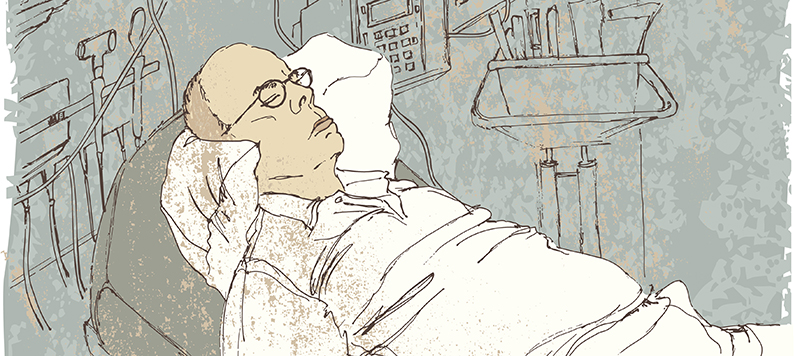Top 5 Insights for end-of-life care in hospitals
2837 0
Anna Nicholas, a palliative care Clinical Nurse Consultant at the Royal Hobart Hospital, has been leading the rollout of a statewide plan to improve end-of-life care in Tasmania. In a recent webinar by Palliative Care Tasmania, Anna shared her top five insights from her experience in nursing and end-of-life care.

1. The wishes of the patient
Considering the patient's wishes is paramount, and navigating these discussions requires empathy, patience, and a personalised approach tailored to an individual's needs and circumstances.
By fostering connectivity, acknowledging concerns, and valuing input from chosen families and caregivers, clinicians can ensure a more supportive and informed approach to end-of-life care.
In my experience as a clinician, priorities include:
- aligning treatment with the goals of care
- rationalising medications
- initiating end-of-life care medications, and
- ensuring effective communication with healthcare teams and specialists.
2. Burden vs benefit of treatment
The practical aspects of managing a dying patient from a clinician's perspective, involve various considerations. These include the notable shift in disease burden, including the decrease in the proportion of patients with cancer and the increase in non-malignant diseases, particularly among the frail and elderly.
It's crucial to evaluate interventions based on the patient's prognosis and overall goals of care, including:
- assessing medical goals of care
- considering treatment appropriateness, and
- the likelihood of the patient dying while under care.
The benefits and burdens of each intervention must consider age, comorbidities, premorbid function, and cognition, without ageist bias and where decisions are made with sensitivity to individual circumstances and preferences.
For frail elderly patients, active treatments may not always be appropriate.
Discontinuing and streamlining oral medications may become a top priority, especially when swallowing becomes difficult due to symptoms like nausea and fatigue, and it’s crucial to halt medications that are no longer clinically necessary for end-of-life care.
Ultimately, each case demands a nuanced, individualised approach to relevant factors and an understanding of the patient's wishes and needs.
3. Medication needs
It's important to shift away from the misconception that end-of-life care always necessitates high doses of medication resulting in constant drowsiness. Rather, clinicians should provide effective medication to alleviate symptoms while preserving the individual's ability to engage in meaningful interactions and conversations with loved ones.
This involves:
- undertaking thorough clinical review of patients' medical histories and allergies
- weighing the benefits and burdens of prescribed medications
- collaborating with local and ward pharmacists to ensure medication charting aligns with the patient's clinical needs.
Regular symptom reviews involving the entire care team are essential, including nursing assistants, enrolled nurses, registered nurses, medical professionals, and allied health staff.
4. Communication with chosen family
Chosen family refers to those providing support to the individuals we're caring for, regardless of blood ties. In referring to family, I’m including chosen family.
Supporting a family unwilling to acknowledge that a loved one is dying is challenging, especially with family conflict. Building rapport is crucial, offering clear and concise information while acknowledging their emotional turmoil. It requires patience, understanding, and efforts to reach consensus.
Family conflicts often arise from distress, grief, and love. Creating opportunities for breaks and rotation of family members can help alleviate tension. Respecting everyone's relationship with the patient is essential, despite the difficulty.
Effective communication is key:
- Ensure clear, understandable discussions about the care plan.
- Simplify explanations to reduce anxiety, avoiding complex medical jargon.
- Consider cultural and linguistic factors in delivering personalised care.
- Recognise that patients and families often feel fear and overwhelm upon admission, which impairs their ability to process information. Approach with empathy and patience, adjusting communication to their heightened stress.
5. Getting bereavement right
Think of our approach to end-of-life care like planning for the birth of a child.
Just as we meticulously plan birth experiences with careful attention to atmosphere and details, we should treat end-of-life care with the same dedication.
It is a profound privilege to be part of someone's end-of-life journey alongside their family and loved ones. In these moments, we must ensure they experience the best possible death given the circumstances.
The care and consideration we provide will be remembered by the family and loved ones for a long time.
Learn more and grow your confidence in delivering services and care to people who are dying in the End-of-Life Essentials Clinical Skills in End-of-Life Care modules.